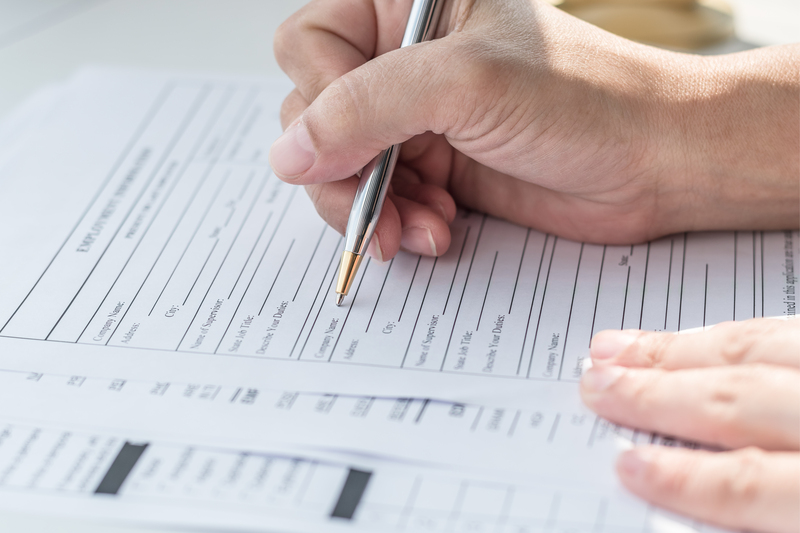Understanding the Hidden Hazards: Dangerous Plastics to Dodge in Daily Life
Did you know that some of the everyday plastics surrounding us could pose a significant risk to your health and the environment? In our modern lives, plastics are everywhere--packaging, household items, children's toys, water bottles, even in our food containers. While the convenience of plastics cannot be denied, certain types of plastics are hazardous and it is crucial to identify which are especially dangerous and why you should actively avoid them whenever possible.

The Critical Problem: Not All Plastics Are Created Equal
Before you toss another plastic container into your microwave or hand a brightly colored plastic toy to your child, learn about the types of plastics that can leach toxins into your food, water, and even the air you breathe. Let's explore the most dangerous plastics to dodge in daily life and learn how to keep your family safe.
Common Types of Plastics: Recognizing the Codes
Plastics are typically labeled with a resin identification code--a number (usually 1-7) found inside a chasing arrows triangle symbol. Knowing how to read these codes is vital for your safety and health.
- Code 1: PETE or PET (Polyethylene Terephthalate)
- Code 2: HDPE (High-Density Polyethylene)
- Code 3: PVC (Polyvinyl Chloride)
- Code 4: LDPE (Low-Density Polyethylene)
- Code 5: PP (Polypropylene)
- Code 6: PS (Polystyrene)
- Code 7: Other (includes Polycarbonate, BPA, etc.)
Most Dangerous Plastics You Should Avoid
Let's break down the plastic types to dodge in your daily routine:
PVC (Code 3): The Poison Plastic
PVC, or polyvinyl chloride, is one of the most toxic plastics used in a variety of products such as plumbing pipes, shower curtains, inflatable toys, and food packaging. The manufacturing and incineration of PVC releases dangerous dioxins, which are carcinogenic, hormone-disrupting, and can accumulate in the food chain.
- Common uses: Clear food wrap, toys, shower curtains, garden hoses, window frames.
- Main risks: Releases phthalates (plasticizers that disrupt hormones), heavy metals, and other toxins.
- Tip: Avoid buying products with code 3 or marked as PVC. Opt for alternatives such as glass, stainless steel, or safer plastics.
Polystyrene (PS - Code 6): Foam and Rigid Food Containers
Polystyrene, or Styrofoam, is common in disposable coffee cups, takeout containers, plates, egg cartons, and packing peanuts. While lightweight and inexpensive, polystyrene can leach styrene, a suspected neurotoxin and carcinogen, especially when heated.
- Common uses: Disposable foam cups and plates, food trays, clamshell takeout boxes, packing peanuts.
- Main risks: Leaches chemicals when in contact with hot foods, fatty foods, or acidic foods. Harmful to brain and nervous system; environmental persistence.
- Tip: Never use polystyrene containers for hot food or drinks. Bring your own reusable containers for takeout.
Plastics Labeled as "Other" (Code 7): The Mystery Mix
Code 7 plastics encompass various types, including polycarbonate (PC) and bioplastics. The main concern: many contain bisphenol A (BPA), and other harmful unregulated compounds. BPA is a known endocrine disruptor associated with reproductive harm, developmental issues, and may increase the risk of some cancers.
- Common uses: Baby bottles (older ones), large water-cooler bottles, sunglasses, sports bottles, electronic casings, car parts.
- Main risks: BPA leaches especially if the plastic is scratched, exposed to heat, or contains acidic or fatty foods/liquids.
- Tip: Look for BPA-free labels, but be careful--some BPA substitutes (BPS, BPF) may also be unsafe!
Other Plastics to Watch Out For
- Polyethylene Terephthalate (PETE or PET, Code 1): Used for most single-use beverage bottles and salad dressing containers. While considered safe for one-time use, it can degrade and leach antimony and other toxins if reused or left in hot environments.
- Low-Density Polyethylene (LDPE, Code 4): Used in plastic bags, some food wraps, and squeezable bottles. Generally less toxic but production and disposal create environmental issues.
Health Effects: What Makes These Plastics Dangerous?
The main reason you should avoid hazardous types of plastics is their potential to leach chemicals linked to various health problems. These risks are heightened by high temperatures, acidic or fatty foods, and repeated or prolonged use.
- Endocrine Disruption: Phthalates, BPA, and certain styrenes interfere with hormone systems, potentially impacting reproductive health and development, especially in children and pregnant women.
- Cancer: Dioxins (from PVC), styrene (from PS), and BPA are linked to different types of cancers.
- Neurological Harm: Styrene exposure can lead to neurodevelopmental damage.
- Other Issues: Asthma, metabolic disorders, cardiovascular problems, allergy aggravation, and more.
Environmental Impact of Dangerous Plastics
It's not just personal health at stake--dangerous plastics pollute our planet. These plastics:
- Break down into microplastics, contaminating soil, water, and air.
- Release toxins during manufacture and disposal (burning or incineration releases carcinogens and dioxins).
- Harm wildlife--animals ingest plastic or get entangled.
- Remain in the ecosystem for centuries, contributing to environmental crises.
How to Recognize and Avoid Harmful Plastics in Daily Life
Identifying and limiting exposure to risky plastic products is key to protecting your health and the environment. Here are practical tips for recognizing and steering clear of dangerous plastics:
Steps to Avoiding Dangerous Plastics
- Learn the Codes: Look for the recycling symbol and check the number. Avoid codes 3, 6, and 7 whenever possible.
- Swap to Safer Alternatives: Replace food/beverage containers and baby products with glass, stainless steel, or certified safe plastics (codes 1, 2, 4, 5).
- Don't Heat Food in Plastic: Microwaving plastic increases chemical leaching. Heat food in glass or ceramic containers instead.
- Don't Reuse Single-Use Plastics: Especially PET (code 1) bottles, as repeated use increases the risk of toxin leaching.
- Buy BPA-Free, But Stay Informed: Demand transparency from brands and look for independent safety certifications.
- Avoid Plastic Toys for Kids: Opt for wooden or certified safe toys, especially for young children who mouth objects.
- Minimize Use of Disposable Plastics: Bring reusable bags, coffee cups, and containers for lunch and takeout.
Smart Shopping and Lifestyle Adjustments
- Choose fresh fruits/vegetables over packaged ones.
- Buy in bulk to reduce overall packaging waste.
- Support brands committed to sustainable & non-toxic packaging.
- Properly recycle or dispose of plastics--never burn them!
Summary Table: Types of Plastics and Their Risks
| Plastic Code | Common Name | Typical Uses | Main Hazards | Safer Alternatives |
|---|---|---|---|---|
| 1 | PETE or PET | Soda/water bottles, food jars | Can leach antimony, especially when heated or reused | Single-use only; use glass or stainless steel |
| 2 | HDPE | Milk jugs, detergent bottles | Generally considered safe, avoid heating | Glass, stainless steel for food contact |
| 3 | PVC | Food wrap, plumbing, toys | Leaches phthalates, dioxins (carcinogenic, hormone disruption) | Glass, food-safe silicone, PEVA wraps |
| 4 | LDPE | Plastic bags, wraps | Low toxicity, but environmentally persistent | Cotton bags, beeswax wraps |
| 5 | PP (Polypropylene) | Yogurt containers, straws | Considered safe, don't overheat | Glass, stainless steel |
| 6 | PS (Polystyrene) | Foam cups, takeout boxes | Leaches styrene (neurotoxic, carcinogenic) | Pulp, bamboo, or reusable containers |
| 7 | Other (Polycarbonate, BPA, etc.) | Baby bottles, large water bottles, electronics | Leaches BPA and related compounds (endocrine disruption) | Glass, stainless steel, BPA-free certified products |
Conclusion: Making Safer Choices Every Day
The truth about everyday plastics is clear: not all plastics are safe for daily use. Avoiding the most dangerous plastic types--particularly PVC (code 3), polystyrene (code 6), and most Code 7 (polycarbonate, BPA-containing plastics)--can dramatically lower your risk of exposure to harmful chemicals. Always stay informed and vigilant when buying and using plastic products.
Remember: Being a smart consumer today means more than just recycling--it means actively choosing to reduce your exposure to toxic plastics for both your well-being and the environment.
Small changes in your daily plastic habits add up to big benefits for yourself and future generations.

Frequently Asked Questions: Avoiding Dangerous Plastics
1. Which plastic numbers are the most dangerous?
Codes 3 (PVC), 6 (polystyrene), and 7 (polycarbonate/BPA) should generally be avoided whenever possible due to their leaching of hazardous chemicals.
2. Is BPA-free plastic safe?
Not always--some substitutes like BPS and BPF can also be endocrine disruptors. Opt for glass, stainless steel, or certified BPA-free items from reputable brands.
3. Can I reuse PET (code 1) bottles?
It is best to avoid reusing PET bottles. They are meant for single use and repeated use increases leaching risks, especially if washed with heat or exposed to sunlight.
4. Can I microwave food in plastic containers?
Do not microwave food in plastic. Even "microwave-safe" plastics may leach chemicals at high temperatures. Use glass or ceramic cookware instead.
5. How can I reduce my use of dangerous plastics?
- Choose reusable and safer alternatives (glass, stainless steel, bamboo).
- Read labels and understand recycling codes.
- Avoid heating, microwaving, or dishwasher use of plastics.
- Support zero-waste and sustainable initiatives.
Take Action Today: Stay Safe from Hazardous Plastics
Arm yourself with knowledge--learn the plastic codes, read product labels, and make conscious, eco-friendly choices. By dodging dangerous plastics in daily life, you're protecting your health, your family, and the planet for generations to come.